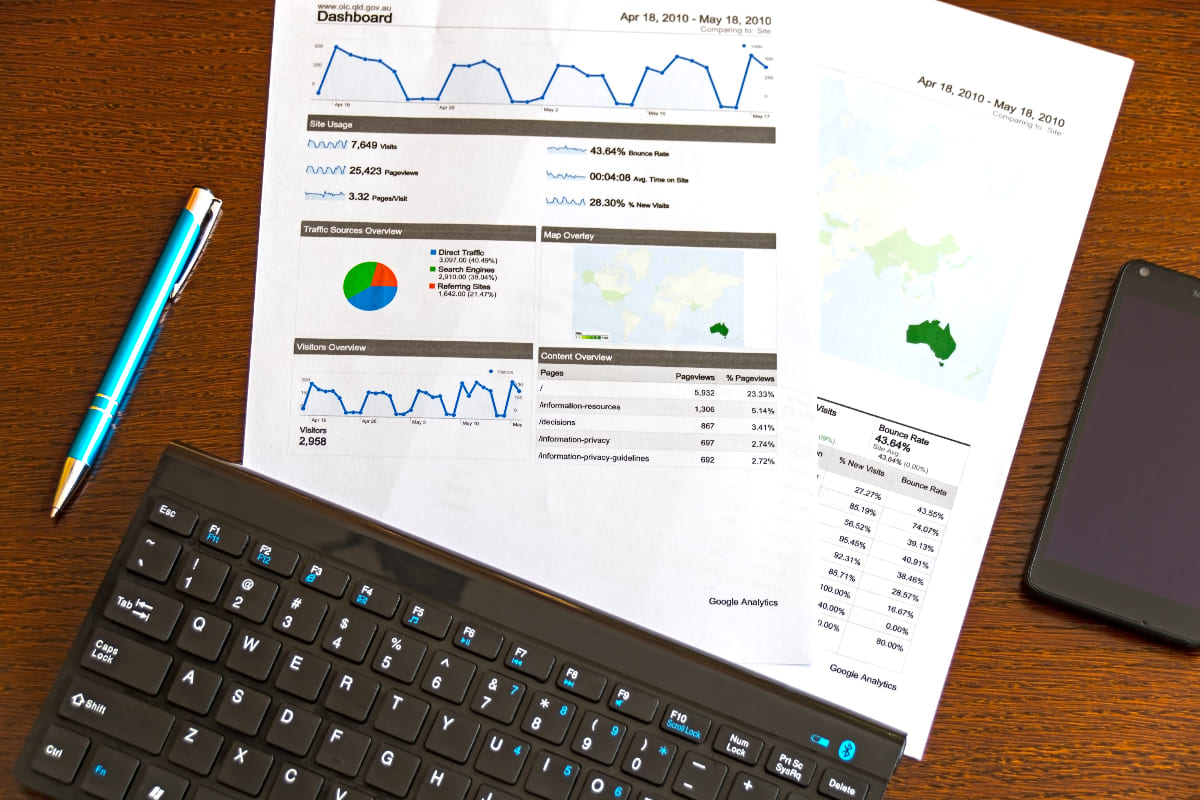
- Fecha de publicación
- Junio 2023
- Comercial y Ventas
- Artículo
Sales Key Performance Indicators (KPIs) are metrics that are used to measure the effectiveness of a company's sales team. They allow businesses to track the progress of their sales team and identify areas that need improvement. In this article, we'll discuss the top 5 Sales KPIs and how you should use them.
1. Sales Growth
Sales growth is the increase in revenue generated by a company over a specific period. It is the most basic and essential Sales KPI because it shows how well a company is doing in terms of sales. You can calculate sales growth by subtracting the revenue of the previous period from the current period and dividing the result by the revenue of the previous period.
To use this KPI effectively, you should track it regularly and compare it to your goals. If you see a decline in sales growth, it's time to identify the cause and take corrective action. For example, if sales are declining due to poor product quality, you can improve quality control processes or invest in research and development.
2. Customer Acquisition Cost (CAC)
Customer Acquisition Cost (CAC) is the cost of acquiring a new customer. It includes all marketing and sales expenses, such as advertising, salaries, commissions, and other overhead costs. You can calculate CAC by dividing the total cost of acquiring new customers by the number of new customers.
To use this KPI effectively, you should compare it to the lifetime value of a customer (LTV). LTV is the revenue that a customer generates for your business over the entire duration of their relationship with you. If your CAC is higher than the LTV, you need to adjust your sales and marketing strategies to reduce costs or increase customer value.
3. Conversion Rate
Conversion rate is the percentage of leads that turn into paying customers. It's a crucial Sales KPI because it shows how effective your sales team is at closing deals. You can calculate conversion rate by dividing the number of conversions by the number of leads.
To use this KPI effectively, you should track it by sales rep and sales funnel stage. This will help you identify which reps are performing well and which stages need improvement. For example, if you notice a low conversion rate in the middle of the funnel, you may need to improve the quality of leads or provide more training for your sales team.
4. Average Sales Cycle
The average sales cycle is the amount of time it takes for a lead to become a paying customer. It includes all the steps from the first contact to the final sale. You can calculate the average sales cycle by adding up the time it takes for each customer to convert and dividing it by the number of customers.
To use this KPI effectively, you should track it by sales rep and sales funnel stage. This will help you identify which reps are taking longer to close deals and which stages need improvement. For example, if you notice that a particular rep has a longer sales cycle than others, you may need to provide more training or support to help them close deals faster.
5. Sales Pipeline Velocity
Sales pipeline velocity is the rate at which leads move through the sales pipeline. It measures the speed at which leads are converted into customers. You can calculate sales pipeline velocity by multiplying the number of leads in the pipeline by the conversion rate and dividing it by the average sales cycle.
To use this KPI effectively, you should track it regularly and compare it to your goals. If you notice that your sales pipeline velocity is lower than expected, you may need to improve your sales and marketing strategies or adjust your sales process.
In conclusion, Sales KPIs are critical for measuring the effectiveness of your sales team and identifying areas that need improvement. The top 5 Sales KPIs are sales growth, customer acquisition cost, conversion rate, average sales cycle, and sales
También te puede interesar

Agenda 2030: qué es y para qué sirve
En el mundo profesional y empresarial actual, entender la Agenda 2030 se ha convertido en una necesidad estratégica. Este plan de acción global fue oficialmente adoptado el 25 de septiembre de 2015 ...
- Publicado por _ESIC Business & Marketing School

¿Qué es el software de código abierto?
El software de código abierto ha revolucionado el mundo tecnológico y cuenta con una comunidad que actualmente incluye a más de 83 millones de desarrolladores en GitHub y más de 20 millones de r...
- Publicado por _ESIC Business & Marketing School

¿Qué es la resiliencia climática?
El planeta se enfrenta a una realidad innegable: la temperatura media ha subido 1,1 °C desde la era preindustrial. Este aumento desencadena fenómenos meteorológicos extremos que ponen en peligro nu...
- Publicado por _ESIC Business & Marketing School
